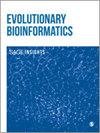三种元路径中药物疾病关联的标签转移
IF 1.5
4区 生物学
Q4 EVOLUTIONARY BIOLOGY
引用次数: 0
摘要
确定疾病与药物之间潜在的相互作用和关系对于公共医疗保健和药物研发意义重大。众所周知,通过实验来确定药物与疾病之间的相互作用在时间和金钱上都非常昂贵。然而,仍有许多药物与疾病之间的关联尚未被发现,而且潜力巨大。因此,开发计算方法来探索药物与疾病之间的关系是非常重要和必要的。许多预测药物-疾病关联的计算方法都是基于已知的相互作用来学习未知药物-疾病配对的潜在相互作用。在本文中,我们基于药物-蛋白质-疾病对象的异构生物网络,提出了 3 组新的元路径。我们为每个元路径设计了一个机器学习模型,然后由这些模型组成了一个集成学习方法。我们在 DrugBank、OMIM 和 Gottlieb 数据集这三个标准数据集上评估了我们的方法。实验结果表明,所提出的方法在一些指标(如 AUC 值)上优于最近的一些方法,如 EMP-SVD、LRSSL、MBiRW、MPG-DDA、SCMFDD......。.在 AUC、AUPR 和 F1 分数等一些指标上更胜一筹。本文章由计算机程序翻译,如有差异,请以英文原文为准。
Label Transfer for Drug Disease Association in Three Meta-Paths
The identification of potential interactions and relationships between diseases and drugs is significant in public health care and drug discovery. As we all know, experimenting to determine the drug-disease interactions is very expensive in both time and money. However, there are still many drug-disease associations that are still undiscovered and potential. Therefore, the development of computational methods to explore the relationship between drugs and diseases is very important and essential. Many computational methods for predicting drug-disease associations have been developed based on known interactions to learn potential interactions of unknown drug-disease pairs. In this paper, we propose 3 new main groups of meta-paths based on the heterogeneous biological network of drug-protein-disease objects. For each meta-path, we design a machine learning model, then an integrated learning method is formed by these models. We evaluated our approach on 3 standard datasets which are DrugBank, OMIM, and Gottlieb’s dataset. Experimental results demonstrate that the proposed method is better than some recent methods such as EMP-SVD, LRSSL, MBiRW, MPG-DDA, SCMFDD,. . . in some measures such as AUC, AUPR, and F1-score.
求助全文
通过发布文献求助,成功后即可免费获取论文全文。
去求助
来源期刊

Evolutionary Bioinformatics
生物-进化生物学
CiteScore
4.20
自引率
0.00%
发文量
25
审稿时长
12 months
期刊介绍:
Evolutionary Bioinformatics is an open access, peer reviewed international journal focusing on evolutionary bioinformatics. The journal aims to support understanding of organismal form and function through use of molecular, genetic, genomic and proteomic data by giving due consideration to its evolutionary context.
 求助内容:
求助内容: 应助结果提醒方式:
应助结果提醒方式:


